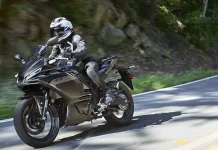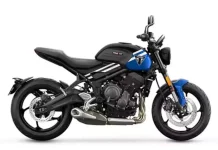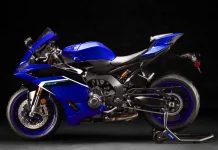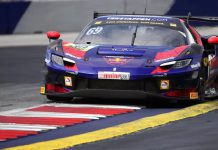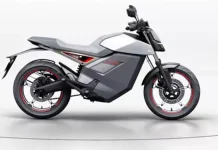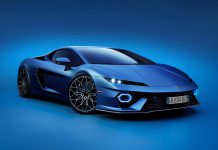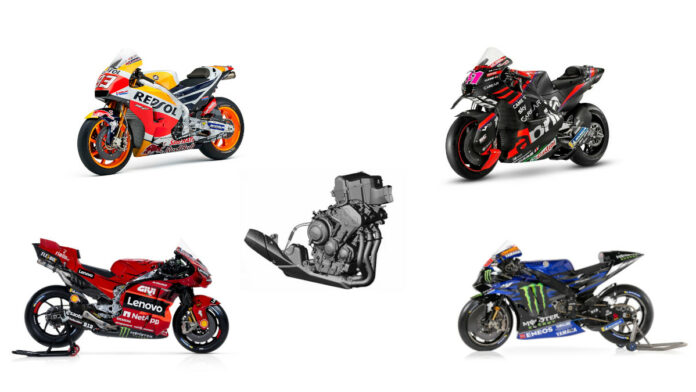Thrilling Evolution of MotoGP Machines
Welcome to the adrenaline-charged world of MotoGP, where speed meets innovation at every turn. In this article, we’re diving into the thrilling evolution of MotoGP machines, exploring how these two-wheeled marvels have transformed over the years.

History of MotoGP Bikes
The history of MotoGP bikes is a fascinating journey through the evolution of motorcycle technology and racing. This history is marked by significant technological advancements, changes in regulations, and the rise of iconic manufacturers and riders. Let’s take a ride through this exciting history:
The Early Years (1949-1970s)
- Birth of the World Championship: The Motorcycle Grand Prix World Championship, now known as MotoGP, was established in 1949. It originally included classes based on engine size.
- British Dominance: In the early years, British manufacturers like Norton, Triumph, and BSA dominated the scene.
- Technological Simplicity: Bikes were relatively simple in technology, with four-stroke engines being the norm.
The Two-Stroke Era (1970s-2002)
- Rise of Two-Stroke Engines: In the 1970s, two-stroke engines began to dominate, known for their power-to-weight ratio. Yamaha, Suzuki, and later Honda, became key players.
- Increasing Speeds and Competition: This era saw significant increases in speed and competitiveness, with legendary riders like Giacomo Agostini, Barry Sheene, and Kenny Roberts.
The Modern Era (2002-Present)
- Introduction of MotoGP Class: In 2002, the premier class was rebranded as MotoGP, moving away from the 500cc formula to allow 990cc four-stroke engines.
- Technological Advancements: This era witnessed rapid technological advancements, including electronic aids like traction control, anti-wheelie systems, and seamless gearboxes.
- Reduction in Engine Size: In 2007, engine sizes were reduced to 800cc to control speeds, but this actually led to faster lap times. In 2012, the limit was again raised to 1000cc.
- Aerodynamic Innovations: Aerodynamics became increasingly sophisticated, with the introduction of winglets and other features to improve stability and handling.
- Diverse Manufacturers: Alongside established brands like Honda, Yamaha, and Ducati, new manufacturers like KTM and Aprilia entered the competition.
- Rider Safety Improvements: There has been a continuous focus on improving rider safety, with advancements in protective gear and circuit safety.
Notable Milestones
- Introduction of MotoE: In 2019, the MotoE World Cup was introduced, focusing on electric motorcycles, reflecting the shift towards sustainable racing technologies.
- The dominance of Legendary Riders: Riders like Valentino Rossi, Casey Stoner, Jorge Lorenzo, and Marc Marquez have become household names, each bringing unique styles and contributing to the sport’s evolution.
The Evolution of Racing Styles
- Riding styles have also evolved, adapting to the technological changes in bikes. The shift from the hanging-off style popularized in the 1980s and 1990s to the extreme body lean angles of today’s riders reflects changes in bike handling and tire technology.
MotoGP
Prepare to be amazed by the blend of cutting-edge technology and sheer racing talent that defines the pinnacle of motorcycle racing.
The Dawn of MotoGP: Where It All Began
The early years of MotoGP set the stage for what would become the most exhilarating motorcycle racing series in the world. These initial bikes, while simplistic compared to today’s standards, laid the groundwork for future innovation. They were lighter, and less powerful, but required immense skill to handle, making every race an intense battle of rider wit and machine endurance.
The 21st Century: A Technological Leap
Fast forward to the 21st century, and we witness a quantum leap in MotoGP technology. Engineers and designers have relentlessly pushed the boundaries, introducing features like advanced electronics, traction control, and sophisticated aerodynamics. These improvements haven’t just made the bikes faster; they’ve revolutionized how riders interact with their machines, turning them into finely tuned instruments of speed.
The Role of Aerodynamics: Cutting Through Air
One of the most noticeable changes in modern MotoGP bikes is their aerodynamic design. Today’s machines boast wings and fairing shapes designed to slice through the air with minimal resistance, enhancing speed and stability. This aerodynamic evolution plays a crucial role in how bikes perform, especially at high speeds on straight stretches and during crucial overtaking manoeuvres.
The Powerhouse: Engine Evolution
The heart of a MotoGP bike, its engine, has also undergone significant transformation. The focus has shifted from merely boosting horsepower to optimizing power delivery and efficiency. Modern engines are not just about raw power; they’re about delivering that power in the most effective way possible, ensuring that riders can accelerate out of corners and down straights with unmatched speed.
Electronics: The Invisible Advantage
Electronics in MotoGP bikes have become so advanced, that they’re like having a supercomputer onboard. From managing traction control to adjusting braking power, these electronic systems allow riders to push their bikes to the limit while maintaining a level of safety and control that was unimaginable in the past.
The Future: Where Do We Go From Here?
The future of MotoGP machines looks more exciting than ever. With talks of hybrid technologies, further advancements in aerodynamics, and even greater integration of electronic systems, the next generation of MotoGP bikes promises to be faster, smarter, and more thrilling to watch.
Motorcycle Racing
The top MotoGP bikes represent a pinnacle of motorcycle engineering, combining advanced technology, aerodynamics, and sheer power. Let’s delve into the details of some of the most prominent MotoGP bikes as of my last update in April 2023. Note that the rankings and capabilities of these bikes can vary based on the latest technological updates, team strategies, and rider performances.
1. Ducati Desmosedici GP
- Engine and Power: Ducati’s bike typically features a V4 engine known for its high power output.
- Aerodynamics: Ducati has often led in aerodynamic innovations, with distinctive winglets and fairing designs for downforce and stability.
- Electronics: Advanced electronics for traction control, engine braking, and power delivery.
- Achievements: Ducati has been competitive in recent seasons, often leading in straight-line speed.
2. Yamaha YZR-M1
- Handling: Yamaha’s bike is renowned for its exceptional cornering and handling.
- Engine: An inline-four engine, known for its smooth power delivery.
- Rider-Friendly: Often praised for being more adaptable to different riding styles.
- Electronics: Advanced but often considered more rider-dependent than some competitors.
3. Honda RC213V
- Engine: A V4 engine configuration, typically high-revving and powerful.
- Handling: Known for being physically demanding but extremely fast in skilled hands.
- Rider-Specific Design: Historically built around specific riders, like Marc Marquez.
- Electronics: Cutting-edge, often pushing the limits of MotoGP regulations.
4. Suzuki GSX-RR
- Handling: Excellent in corners, known for its agility.
- Engine: An inline-four engine that offers a balanced power delivery.
- Rider-Friendly: Generally considered one of the more rideable bikes on the grid.
- Electronics: Good traction control and electronic aids, though sometimes considered less aggressive than competitors.
5. KTM RC16
- Development: Rapid development and improvement over recent years.
- Engine: V4 configuration, with a focus on torque and rideability.
- Chassis: The steel trellis frame, is unique among its competitors.
- Team Effort: Strong collaboration between riders and engineers for continuous improvement.
6. Aprilia RS-GP
- Recent Advancements: Significant improvements in performance in recent seasons.
- Engine: V4 engine, focusing on a blend of power and control.
- Aerodynamics: Innovative aerodynamic elements for stability and speed.
- Electronics: Advanced systems, increasingly competitive with top teams.
7. MV Agusta F2
- Historical Significance: Known for its legacy in motorcycle racing, not a participant in the MotoGP class.
- Innovation and Design: If they were in MotoGP, expect cutting-edge technology blended with classic design elements.
8. BMW M1000RR
- Superbike Roots: Mainly focused on the Superbike World Championship.
- Technology: If entered in MotoGP, would likely feature advanced electronics and a focus on engine performance and handling.
9. Triumph
- Moto2 Engine Supplier: Triumph was known for supplying engines in the Moto2 class, not competing in MotoGP.
- Performance Characteristics: In Moto2, is known for reliability and performance consistency.
10. Energica
- Electric Innovation: The sole supplier for the MotoE class, focused on electric motorcycle technology.
- Not in MotoGP: They are not a participant in the MotoGP class but are significant in the electric racing sphere.
Remember, the world of MotoGP is dynamic, and teams constantly evolve their bikes for better performance. The details provided reflect the status as of early 2023 and might have changed since then. MotoGP bikes are at the forefront of motorcycle technology, and each brings unique strengths to the fiercely competitive world of premier-class motorcycle racing.
Racing Technology
Impact on Motorcycle Enthusiasts
The world of MotoGP and its advanced motorcycles have a profound impact on motorcycle enthusiasts around the globe. This impact manifests in various ways, from influencing consumer motorcycle technology to shaping the culture and community of motorcycling. Here’s a closer look at how MotoGP resonates with motorcycle enthusiasts:
1. Technological Trickledown
- Advanced Technology in Consumer Bikes: Many of the innovations developed for MotoGP eventually make their way into consumer motorcycles. Technologies like traction control, ABS, quick shifters, and electronic suspension, once exclusive to the racetrack, are now common in street bikes.
- Performance and Safety Improvements: The continuous push for performance in MotoGP leads to safer and more efficient bikes for everyday riders.
2. Inspiring Design and Aesthetics
- Design Influence: The sleek, aerodynamic designs of MotoGP bikes often influence the styling of commercial motorcycles, making them more appealing to enthusiasts.
- Brand Loyalty: Fans may develop loyalty to certain brands based on their MotoGP presence and success, influencing their purchasing decisions.
3. Community and Culture
- Shared Passion and Social Connections: MotoGP events and fan communities bring enthusiasts together, fostering a sense of belonging and shared passion. This often extends to online forums, fan clubs, and social media groups.
- Riding Clubs and Track Days: Inspired by MotoGP, many enthusiasts participate in track days and join riding clubs to experience a bit of the racing thrill.
4. Influence on Riding Skills and Safety Awareness
- Riding Techniques: Watching professional riders inspires enthusiasts to learn and improve their own riding skills.
- Safety Awareness: The emphasis on safety in MotoGP, including the use of protective gear and responsible riding, influences enthusiasts to adopt safer riding practices.
5. Economic and Industry Impact
- Boost to the Motorcycle Industry: The popularity of MotoGP supports the motorcycle industry, from bike sales to accessories and gear.
- Career Aspirations: For some, MotoGP inspires careers in motorcycle mechanics, engineering, or even competitive racing.
6. Advocacy and Environmental Awareness
- Promotion of Motorsport: MotoGP plays a role in advocating for the broader world of motorsports, including issues like track safety and rider rights.
- Focus on Sustainability: The shift towards sustainable practices in MotoGP, like the MotoE class, raises awareness about environmental issues among enthusiasts.
7. Global Expansion and Accessibility
- Expanding Interest Worldwide: MotoGP’s global presence introduces the sport to new audiences, expanding the motorcycling community.
- Media and Accessibility: Extensive coverage of MotoGP races and behind-the-scenes content makes the sport more accessible and engaging for enthusiasts.
In essence, MotoGP not only represents the pinnacle of motorcycle racing but also acts as a catalyst for technological innovation, cultural engagement, and community building among motorcycle enthusiasts. Its influence extends far beyond the racetrack, shaping the very fabric of the motorcycle world.
Conclusion
The evolution of MotoGP machines is a testament to human ingenuity and the relentless pursuit of speed. These bikes are not just vehicles; they’re the culmination of decades of engineering, innovation, and a deep passion for motorcycle racing. As technology continues to advance, one can only imagine how these incredible machines will continue to evolve, taking the sport of MotoGP to even greater heights. Stay tuned, because the best, undoubtedly, is yet to come!
Ducati, Yamaha, Honda, Suzuki, KTM, Aprilia, MV Agusta, BMW, Triumph, Energica


